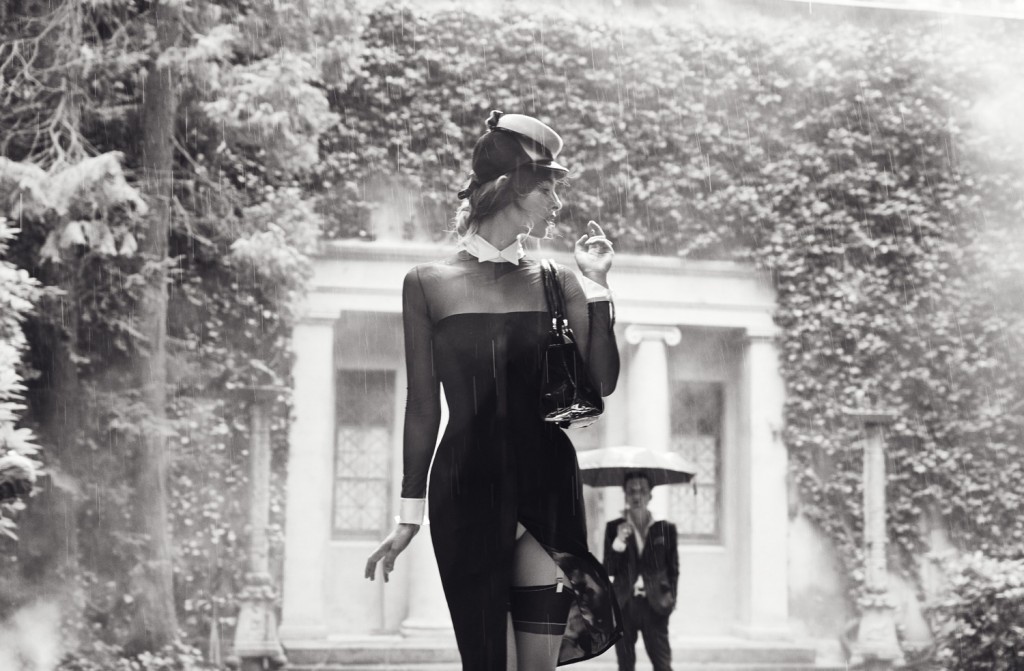
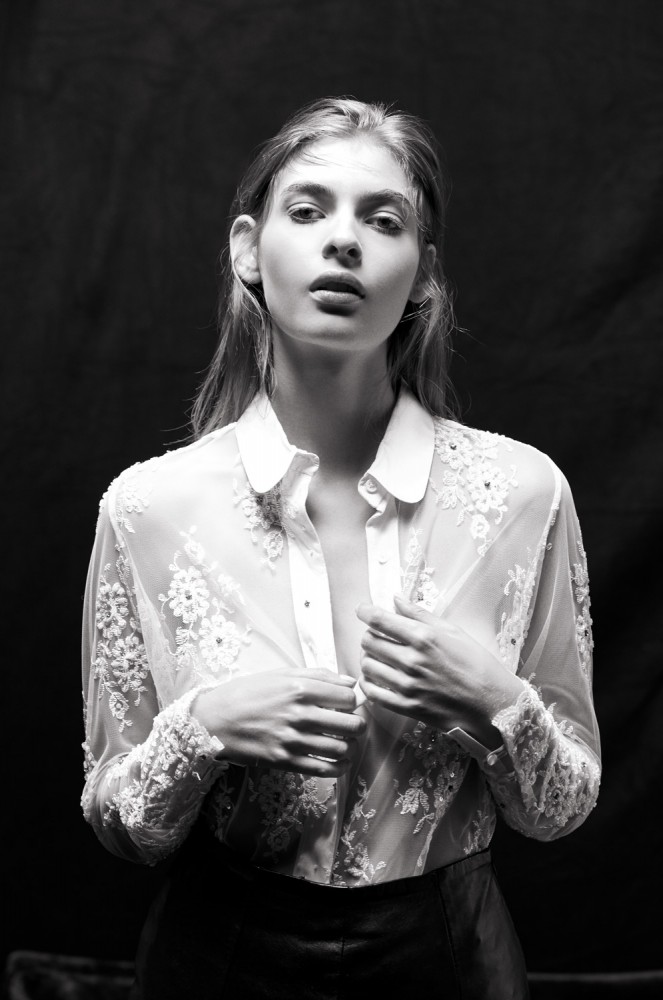
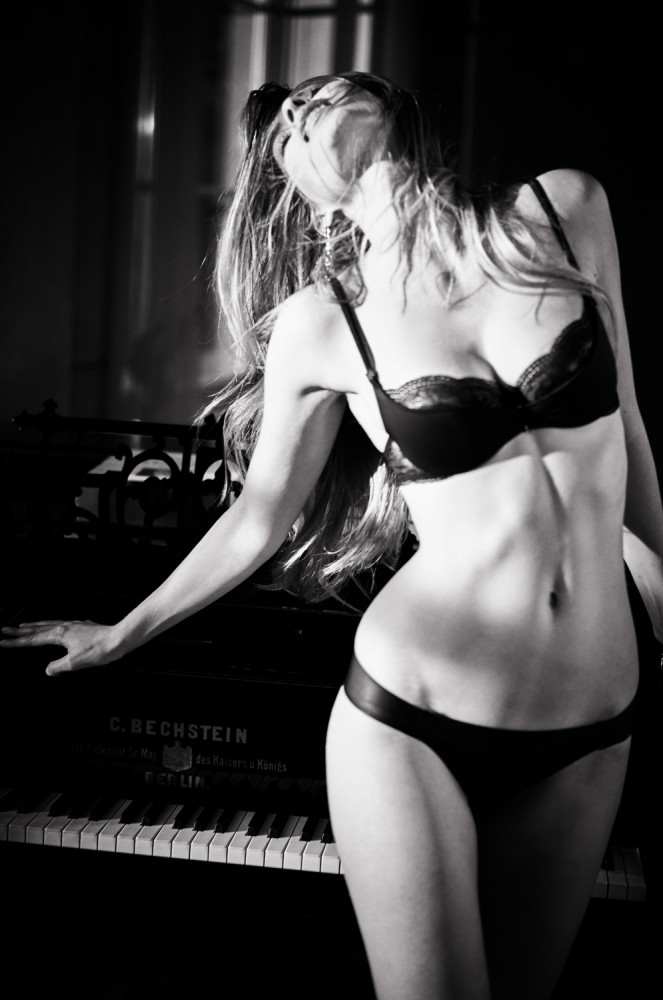
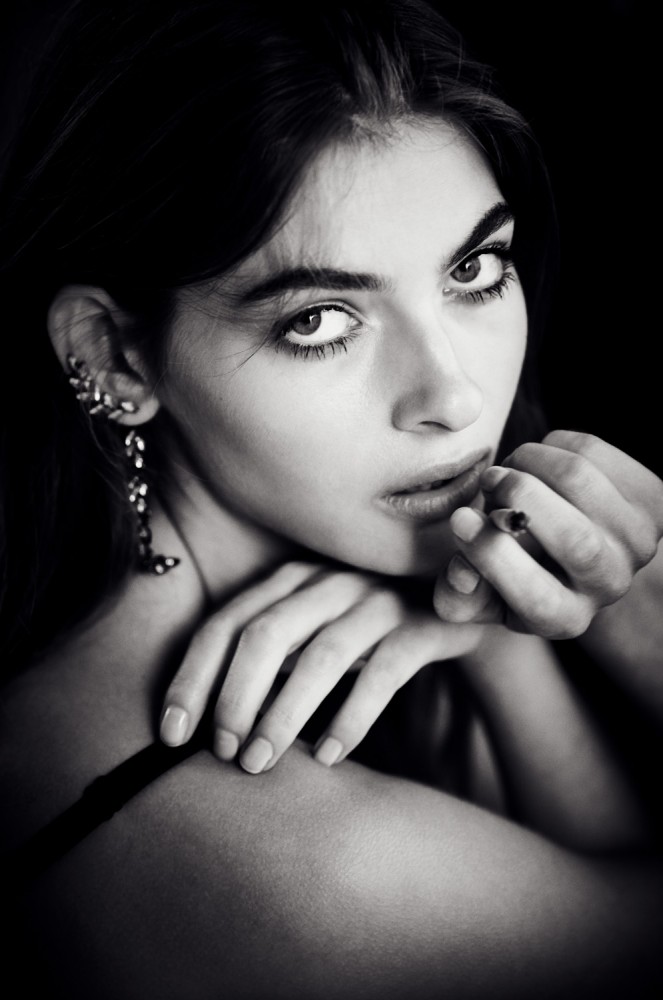
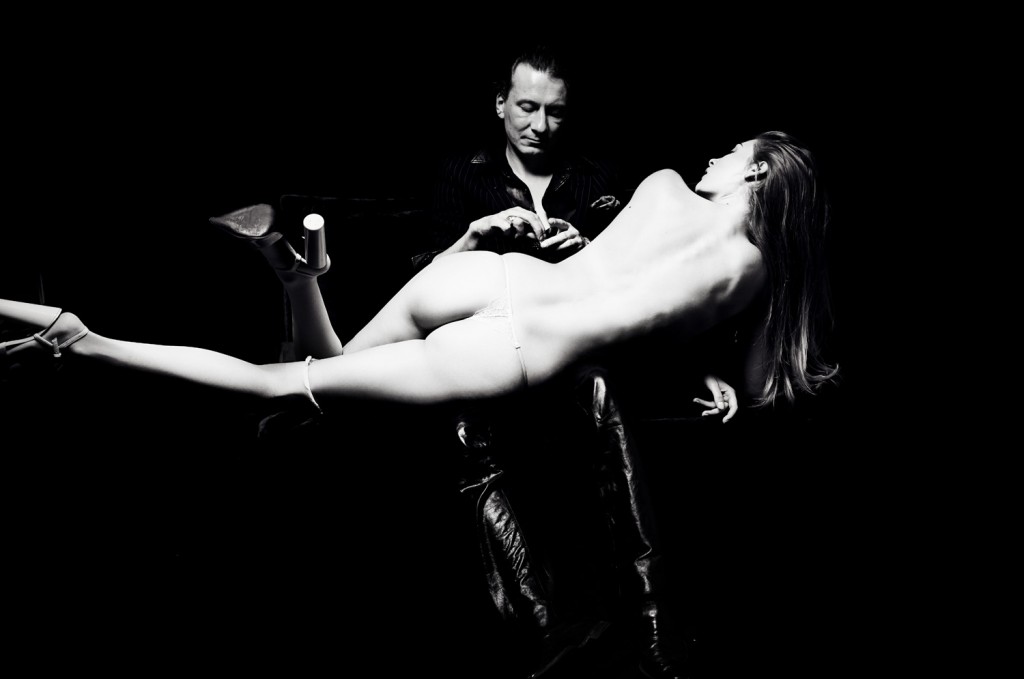
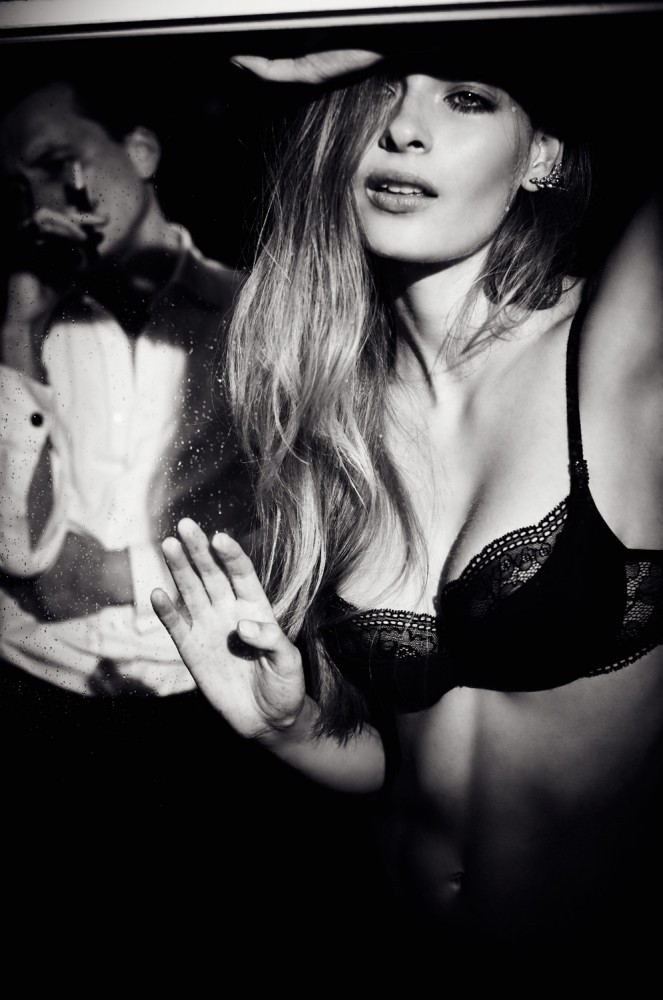
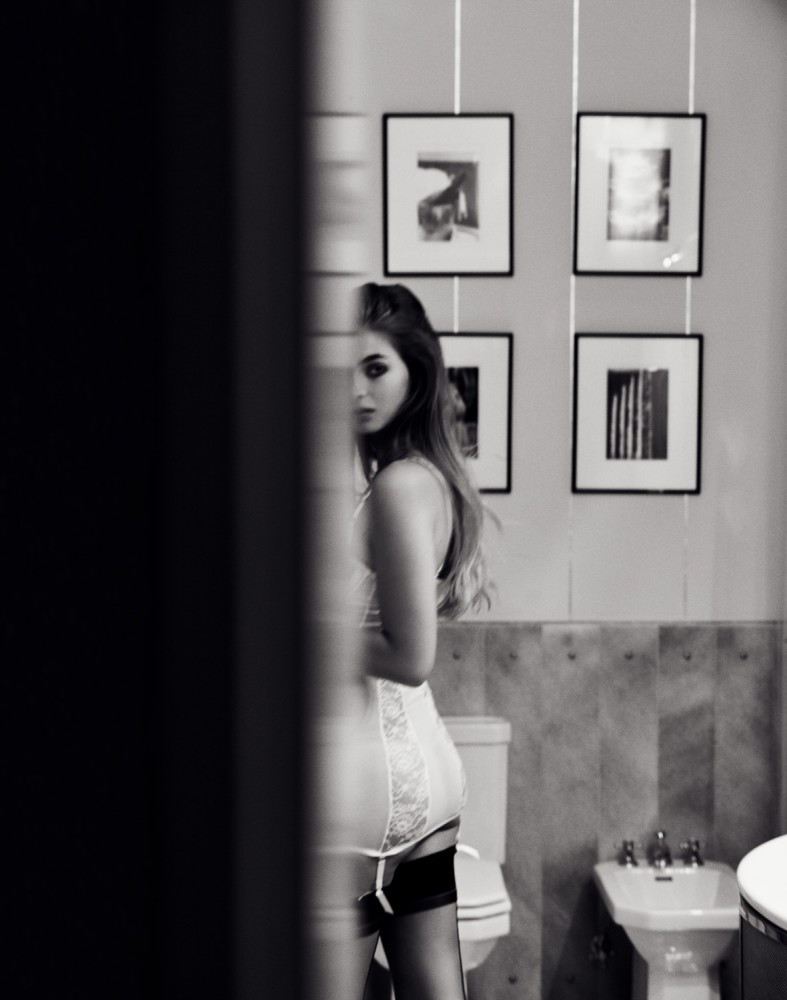
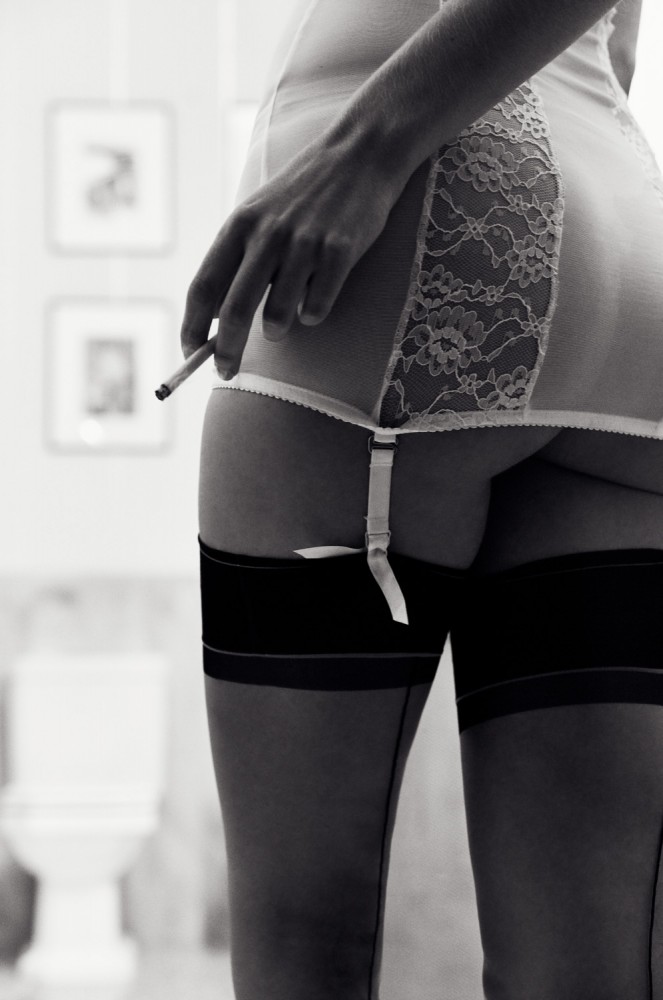
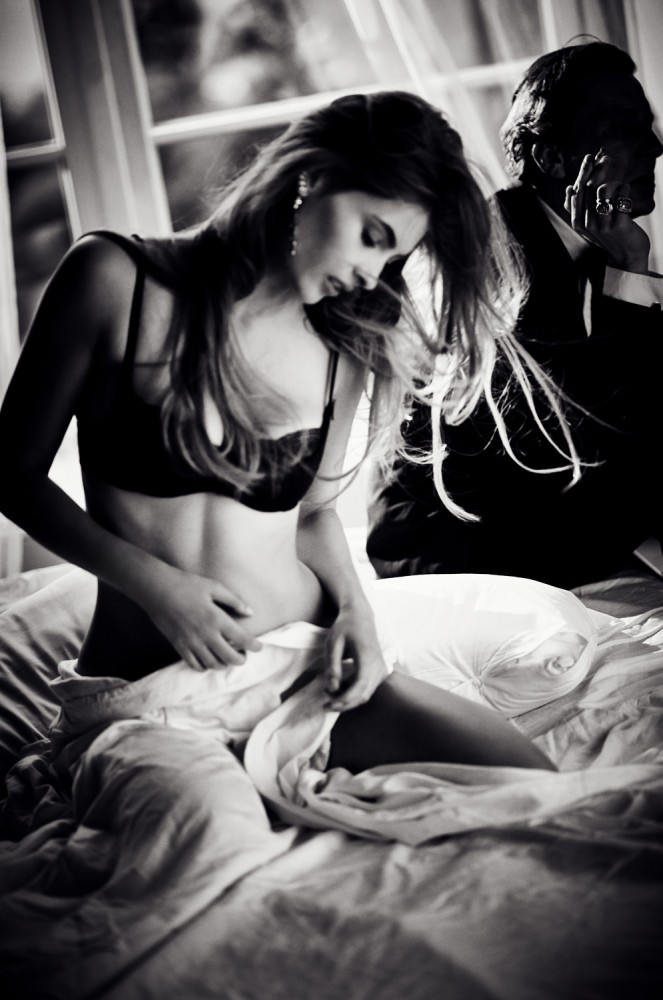
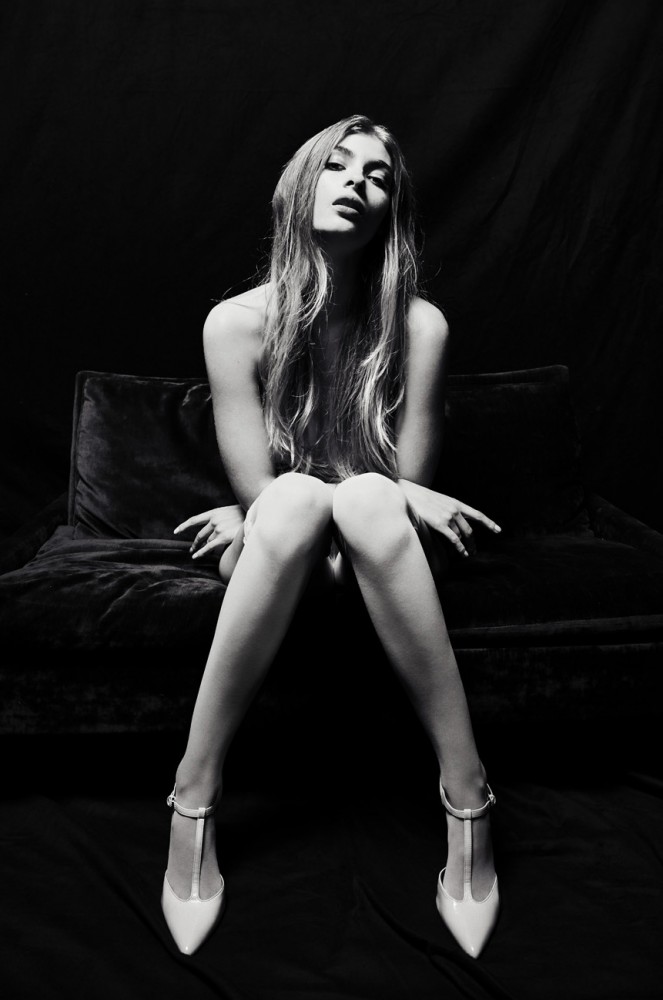
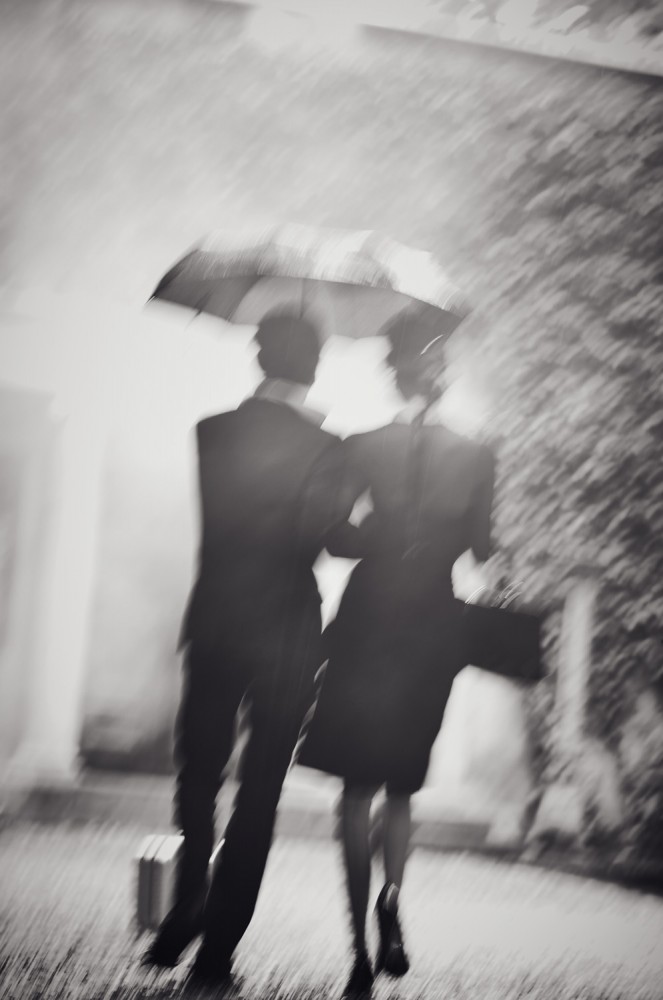

INTERVIEW
Esther Haase
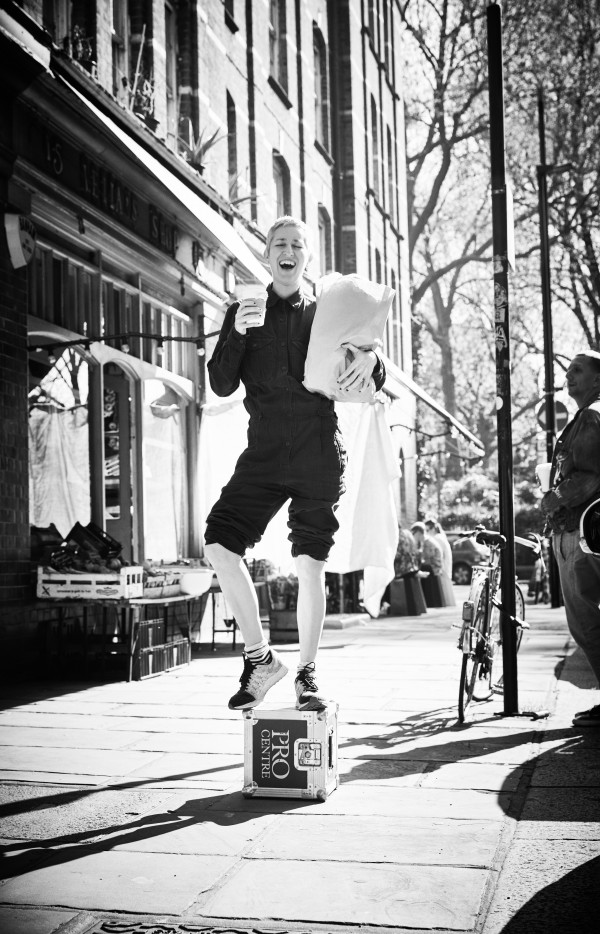
PHOTOGRAPHY Esther Haase STYLING Mimi Hocke @ Uschi Rabe HAIR & MAKEUP Dennis Brandt @ Bigoudi MODELS Isabelle Surmont @ Place Model Management and Harald Nicolas Stazol PRODUCER Claudia Binke RETOUCHING Annalena Rumler CAMERA Leica S (TYP 007) with Vario-Elmar-S 30-90mm f/3.5-5.6 Asph., Summarit-S 70mm f/2.5 Asph. (CS), Apo-Macro-Summarit-S 120mm f/2.5 (CS)
“Je t’aime ... moi non plus“ by Serge Gainsbourg and Jane Birkin was the source of inspiration for Esther Haase’s photographic and cinematic interpretation of the theme. A splendid, former Lagerfeld, villa in Hamburg served as a backdrop for the series and the film – a love story with Isabelle Surmont and Harald Nicolas Stazol, told in timeless, classic black and white, and with a look and flair of the sixties.
You chose the rather glorious Villa Jako, a small palace formerly owned by Karl Lagerfeld, for the photo shoot. How did the genius loci influence you and your pictures there?
I’ve known the villa for a long time and have already done a few photo shoots there. I love it. It’s so mundane, elegant and has a French touch about it. The feeling there, the view through the garden to the Elbe is a dream, the place has culture, size and style. The villa grants me wings every time.
The garden is so enchanting, a real pleasure garden with small water features, knotted trees and a beautiful fountain. The place stirs up so much in me and awakens my imagination. I forget that I’m in Hamburg; it’s just incredibly lovely.
The team was made up of eight people: do you always work with so many assistants, and do you always employ people who you trust?
I love working in a familiar atmosphere, especially when dealing with such an intimate photo shoot as this one. The team is usually made up of a make-up artist, a stylist, a digital operator, a light assistant and, of course, the models; and then, before you know it, there are seven of us including me – and then, the client of course…
You often photograph in black and white and sometimes in colour. At what point do you decide for the colour option?
I basically consider black and white timeless and classic; but I also love taking colour photographs – but only when colour is being consciously used as a stylistic means. This means, for example, that you deliberately apply certain colours to compliment – red against green, or monochrome red in red… red mails, red lips, red background. In this regard, I’m very inspired by Erwin Blumfeld. It depends on each motif and on the light.
The photo shoot tells a love story, a reprise of the love bond between Serge Gainsbourg and Jane Birkin. You have called it Je t´aime, inspired by Gainsbourg’s most famous song. How did you come up with this idea?
I’ve only been asked once if I could interpret a song, and then, together with my favourite stylist and friend Mimi, I came up with the title, ‘Je t'aime’. What better song to visualise photographically than ‘Je t’aime, moi non plus?’
The fine web of emotions was conveyed into the photo shoot; the pictures are tenderly fragile. Are you a hopeless romantic?
In classical dance, romanticism plays a very important role. I was once a dancer. One could say I’m a romantic but, in fact, I’m primarily extremely empathetic, and I can feel my way into situations – or in this case, the music – very well.
What criteria did you use to choose your models?
I was looking for a woman who was sensual, soft and warm. I’ve worked with Isabel before, for both editorial spreads for Italian Vanity Fair, as well as advertising campaigns. I always wanted to do something of my own with her. She has a great personality, is courageously free and inspiring; above all, I always had a very good, personal connection to her. She is the ideal cast, and I’ve also known Harald for a very long time – around 20 years. I was looking for a wickedly intellectual dandy, and he was simply perfect for that! I didn’t even have to get him a suit, because he was simply perfect!!!
The production is directed towards very elaborate moods; yet, at the same time you surrendered to spontaneity, leaving lots of space for freedom. Is it always like that for you? At what point do you let things take their own course?
I always prepare my photo shoots very intensely. I look for images that visualise my thoughts; I look for moods for the hair or for the make-up, or for the location, or for a situation or the lighting... I can then show everyone these pictures and explain what I find important about them; and then everyone is immediately involved, they understand what we’re doing, they’re initiated. Everyone is totally committed, and then we can get going and everyone’s going in the same direction. It makes communication easier. What’s more, this means there’s always a leitmotif. Good preparation is half the story. Then, when I work with the models, life comes into play and new, unique things emerge: you see something and work on it. It’s often small, unconscious, barely noticed moments that arise. I love that. They’re often the most powerful images! I could refer to my photography as staged reportage – everything planned and prepared, but then you gallop off and drop the reins.
The pictures seem lost in reverie and are really timeless, while Gainsbourg and Birkin were a phenomenon and icons of the sixties. How did you solve that?
Very simply. Feelings are not a manifestation of a particular decade – they’re timeless. What’s more, I love the great masters of photography: Horst P.Horst, Man Ray, Richard Avedon, Newton…
A video was also made alongside the photo shoot. Will you at some point – like so many photographers – give equal importance to both mediums? Which is actually your medium of choice?
For me, photography is and remains my priority. I love getting to the point of a story in one picture. Filming tends to be more of a timely, serial collage, where you tell something in many settings; but I love that one special moment that tells the whole story.
All the photos were taken with a Leica S system. How did the camera influence your pictures? Did it represent a different way of working for you? What do you see as the advantages of the Leica S?
For me it really was an exercise of patience, because I normally work with a 35mm in my hands, moving around as I photograph. This time I had to work in a much calmer manner, but I was delighted by the camera’s quality! The fantastic depth, the wealth of detail in the blurriness of movement. That was something I could only achieve with film in the past. This camera has something serious about it; it has authority.
We’ve known each other for close to twenty years now, and I’ve followed your development from close up, practically from the beginning. Looking back, which were the decisive steps in your evolution? What direction will you take in the future? What would you like?
I remember it like it was yesterday. The first meeting at Stern, with you and Wolfgang Behnken, was incredibly important for me; and also, of course, with Mr. Schober, the meeting with my gallery, Camera Work, Paris Photo, the competition awards I’ve won, like the ADC, Reinhardt Wolf, when you take a portrait of a great person, exhibitions, like in Stockholm, Fotografiska, CO Berlin, Bonnie Benrubi NY, books, when you’re given the chance to photograph a big campaign, discovering by chance your photos in a favourite magazine, seeing them hang in Times Square, or seeing your own campaign when zipping through New York in a taxi – or, as happened recently in December and January, being represented at the NRW Forum Düsseldorf.
These kind of moments make me very happy; they are the elixir of life ;)))
I want to be like a good wine that always improves with age. My photography should be timeless. I’d like to be like an Eames chair – it was great right at the beginning and it’s still great – timelessly beautiful.